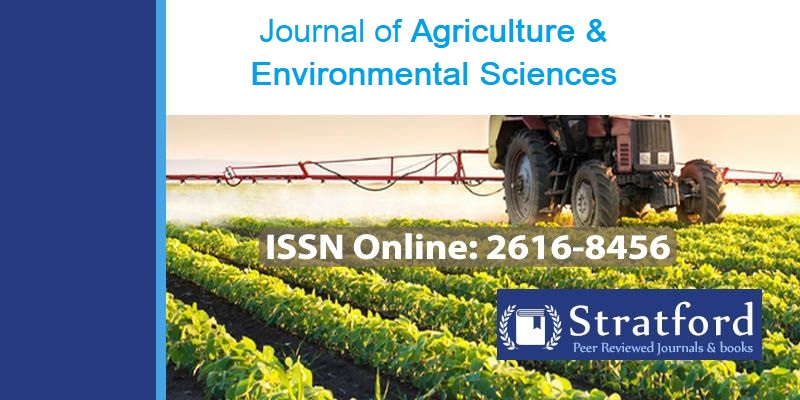The Impact of Climate Variability On Maize Production in Rwanda, A Case of Nyagatare District from 2015-2023
DOI:
https://doi.org/10.53819/81018102t2502Abstract
Climate variability significantly affects agricultural productivity, influencing food security and economic stability. This study investigates the impact of climate variability on maize production in Nyagatare District, using maize yield records from 11 cooperatives in Nyagatare District from 2015-2023 and climate data (rainfall and temperature) from five weather stations with in Nyagatare District between 1983- 2023. The Mann-Kendall test and Theil-Sen's slope estimator were applied to assess the historical trend of climate variability of rainfall and temperature from 1983-2023. The results got from Mann-Kendall indicates positive increase in climate patterns over time. The level of maize production was evaluated using standard deviation, revealing fluctuations between 2015 and 2019, followed by a steady increase from 2020 to 2023. To assess the impact of climate variability on maize production, ANOVA was used, revealed that temperature had a statistically significant effect on maize production (F = 45.10, P <5.2*10-24), indicating that variations in temperature levels strongly influenced yield outcomes. In contrast, rainfall did not significantly affect maize production during the same period (F = 1.00042, P = 0.4879), suggesting that the amount or distribution of rainfall was not a major limiting factor in the study area.
Keywords: Climate Variability, Maize Production, Nyagatare District, Rainfall patterns, Temperature Trends, Yield Variability, Agriculture
References
Ayanlade, A. O. (2022). Extreme climate events in sub-Saharan Africa. ” Climate Services, vol. 27, Article ID 100311, 3.
Epule, T. E. (2022). Recent patterns in maize yield and harvest area across. Agronomy,, 374.
FAO. (2005). THe State Of Food And Agriculture. Food And Agriculture Organization Of The United Nations.
Gaspard, N. (2017). An economic analysis of the factors influencing maize productivity and efficiency in Rwanda: a case study of Gatsibo District. Kenya: Jomo Kenyatta University Of Agriculture.
Theil. (1950). A rank-invariant method of linear and polnomial regresion analysis. Indagationes Mathematicae.
Haque, M. A. (2024). Boron Impact on Maize Growth and. International Journal of Plant & Soil Science, 2.
Herve, M. (2016). invistigating the effect of climate variability and change on maize yield in Rwanda.
Joseph, S. (2023). Spatial and Temporal Analysis of Rainfall Variability andTrends for Improved Climate Risk Management in KayonzaDistrict, Eastern Rwanda. Advances in Meteorology, 1-2.
Minagri. (2009/2010). Annual Report . Ministry of Agriculture and Animal Resources.
Minagri. (2021). Crop Intensification Program and Agricultural Productivity. Ministry of Agriculture and Animal Resource.
Moses Ojara, H. B. (2022). Evaluation of Drought, Wet Events, and Climate Variability Impacts on Maize Crop Yields in East Africa During 1981–2017. International Journal of Plant Production.
Mwongera, C. J. (2019). Climate risk assessment for selected value chain commodities in Rwanda. International Center for Tropical Agriculture, Cali, Colombia., 10.
Ndakize, S. (2018). Spatial-Temporal Varibilty And Projected Rainfall Over Rwanda.
NIST. (2021). Seasonal Agriculture Survey 2020-2021. NIST.
Nsamaza, S. (2024, june 28). Rwanda dispatch . Retrieved june 28, 2024, from https://rwandadispatch.com/: https://rwandadispatch.com/
Oksana Mamai, V. P. (2020). The system of effective management of crop production in . BIO Web of Conferences.
Peter Ranum, J. P.-R.-C. (2014). Global maize production, utilization, and consumption. Annals Of The New York Academy Of Sciences.
Pierre, N. J. (2022). A Study Of Water Content In The Soil For Irrigation Conducted In. Kigali: African Centre Of Excellence In Internet Of Things.
REMA. (2021). National Adaptation Plan Baseline Report. REMA.
Rwibasira, E. (2019). Effect Of Crop Intensification Programe: Analysis Of Its Contribution To Input Use Andextension Services In Nyagatare District, Rwanda.
Sen, P. K. ( 1968). Estimates of the Regression Coefficient Based on Kendall's Tau. Journal of the American Statistical Association.
Siebert, A. D. (2019). Evaluation of ENACTS-Rwanda : A
Twahirwa, C. O. (2023). Assessing Variability and Trends of Rainfall and Temperature for. Advances in Meteorology.
Utouh1, H. M. (2024). Factors Affecting Maize Production in Kiteto District, Manyara Region, Tanzania: Cross Sectional . http://sciencemundi.net, pp. 52-62.


